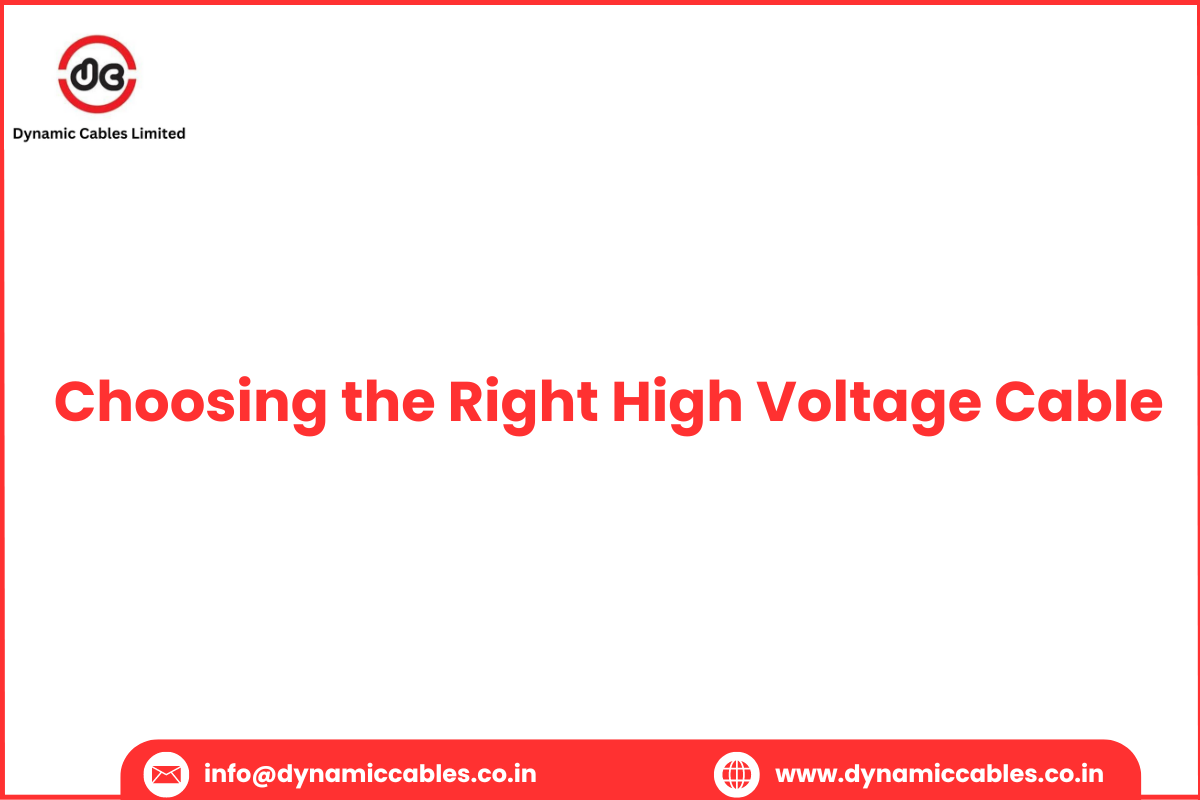- An ISO 9001:2015, 14001:2015 & 45001:2018 Company

How to Choose the Right High Voltage Cable for Your Project?
Choosing the right high-voltage cable for your project is crucial to ensuring safety, efficiency, and longevity in electrical systems. When planning an electrical project, selecting the right high-voltage (HV) cable is crucial for safety, efficiency, and long-term performance. Whether it's for industrial, commercial, or utility applications, the wrong choice can lead to power loss, equipment damage, or safety hazards.
Key Factors to Consider While Selecting High-voltage Cables
Here are some key factors to consider when choosing the right HV cable for your project.
- Understand Your Voltage Requirements: The first step in selecting the right high-voltage cable is to determine your voltage range. High-voltage cables are designed to handle voltages ranging from 1 KV to over 400 KV. Each project will have specific voltage demands depending on the equipment being powered and the distance the electricity needs to travel.
- Consider the Environment: The environment where the cable will be installed plays a critical role in the cable selection process. Different environmental factors like temperature, humidity, and exposure to chemicals or sunlight can affect the performance of HV cables. For outdoor installations, choose cables that are resistant to ultraviolet (UV) rays, moisture, and temperature fluctuations.
- Carrying Capacity of Current: Choosing a cable with the correct ampacity is essential to prevent power loss, fire hazards, and damage to equipment. The larger the cable's conductor, the higher the ampacity. Be sure to factor in the length of the cable run, as longer distances may lead to voltage drops, requiring thicker conductors or additional insulation.
- Material Selection: The most common conductor materials for high-voltage cables are copper and aluminum. Each material has its advantages and considerations.
- Insulation Type: The insulation type of an HV cable determines its ability to withstand electrical stress and external environmental conditions.
- Cable Length and Installation: The length of your cable run affects voltage drop and overall power efficiency. For long distances, thicker conductors may be needed to minimize power loss. Additionally, consider the method of installation. whether the cable will be installed underground, overhead, or in conduits. Underground cables may need additional protection against moisture and mechanical damage, while overhead cables must be selected for their weight and flexibility.
Conclusion
Choosing the right high-voltage cable for your project involves different key factors to consider. By taking the time to consider these elements, you can ensure the longevity, efficiency, and safety of your electrical system. Always consult with a professional engineer or contractor to make informed decisions and select the most suitable high-voltage cable for your project. This will not only optimise performance but also help you avoid costly mistakes in the future.
 English
English


 C701, Tower-C, Noida One
C701, Tower-C, Noida One
